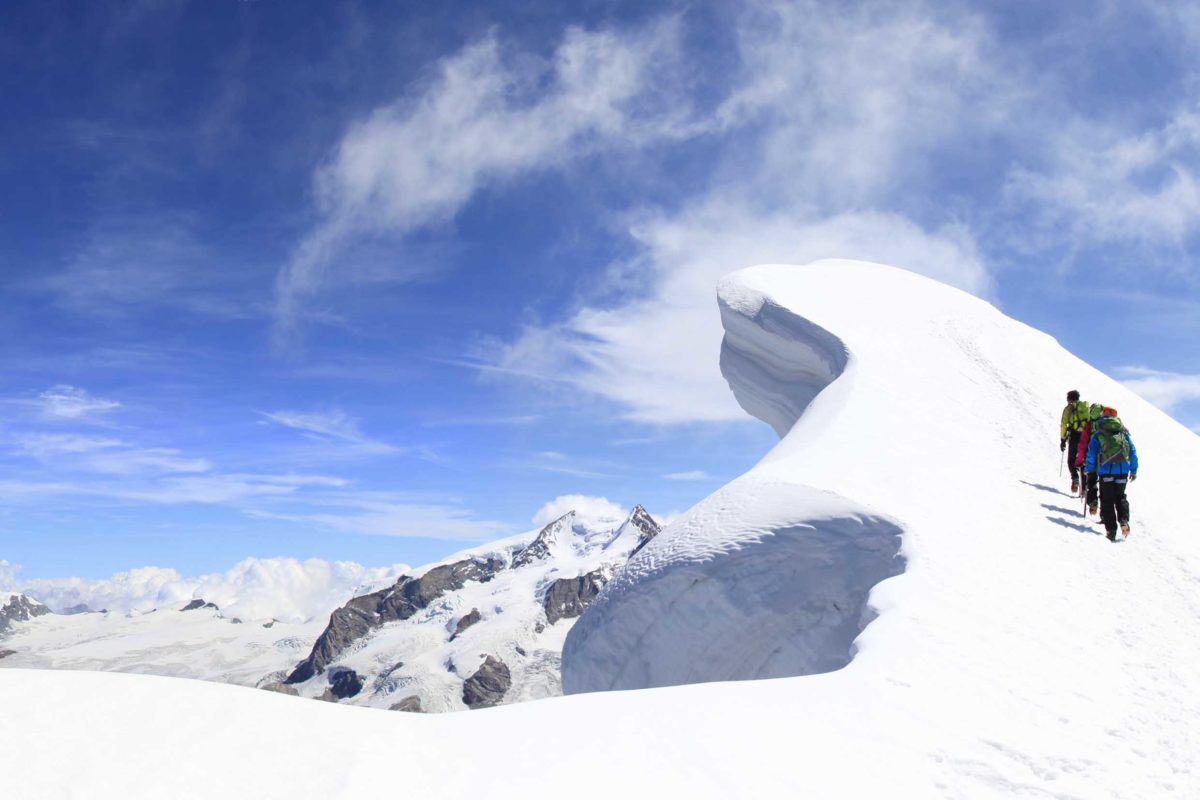The higher we climb, the colder it gets: atmospheric air temperature drops by 1.2 degrees for every 200 metres of elevation gain, or six degrees per 1,000 metres. Meanwhile, extended physical exertion requires extra energy at higher elevations. Thus when you feel drained due to poor nutrition, your body will have trouble producing heat. At first you begin to feel the cold in your extremities; it then spreads to your vital organs. A chapter in the UIAA Alpine Skills Summer handbook dedicated to ‘Cold’ explores both recognising the symptoms of hypothermia and frostbite. This extract focuses on the latter.
How frostbite occurs
Factors that promote frostbite:
- Improper equipment, dampness, wind
- Dehydration, polycythemia (viscous blood: high red blood count), hypoxia (altitude)
- Restricted blood flow: tight clothing or equipment (harness, shoes, crampons), fractures
- Tobacco (vasoconstrictor)
- Recent frostbite
Affected areas:
- The extremities (hands, feet, ears, nose) are affected first
- In the skin: water freezes
- In blood vessels: as the blood vessels narrow, circulation becomes increasingly sluggish then stops; the plasma freezes, blood cells form small clots and the vessel walls become permeable.
Following rewarming:
- Plasma seeps out of the vessel walls (edema, blisters)
The Different Stages of Frostbite

Superficial frostbite
1st degree:
- Whiteness, followed by redness upon rapid warming.
- Decreased sensitivity, which returns quickly after warming.
- Healing in 3 to 4 days, without any residual effects.
2nd degree:
- Whiteness, followed by redness upon slower warming.
- Loss of sensitivity, which returns more slowly.
- Blisters filled with clear fluid, moderate edema.
- Healing in 10 to 15 days, persistent hypersensitivity to cold.
Deep frostbite
3rd degree:
- Pallor (rapid frostbite) or cyanosis (slow frostbite).
- Loss of feeling.
- Major edema in the dead zones upon reheating.
- Large, bloody blisters.
After 10 days:
Black areas of dead tissue, either limited to the skin or extending to the bone. Loss of the extremity.
—
This article is an extract from the ‘Cold’ chapter of the UIAA Alpine Skills Summer handbook. The entire guide is now available to purchase as a digital download. To purchase the guide please click here.
Previous extracts from the Guide can be found on our dedicated Skills page.
About the UIAA Alpine Skills Summer Guide
The UIAA Alpine Skills Summer guide was first published in 2015. Produced in collaboration with the Petzl Foundation, the guide and has been well received worldwide and is currently available in five languages. To mark the launch of a digital version of the publication, the UIAA is running a series of articles from the guide designed to help hikers, climbers and mountaineers develop their skills and knowledge of the mountain environment.
The guide was developed specifically as a reference document for trip leaders and instructors of club and federations within the UIAA – an aide memoire for climbers and mountaineers who attend training courses delivered by instructors and guides who have gained qualifications accredited by the UIAA. Now open to the wider climbing and mountaineering world, the handbook’s four modules focus primarily on summer activities. However, a specific winter guide is currently in production.
TRAINING & SKILLS PARTNER
Main image: Monica Dalmasso




